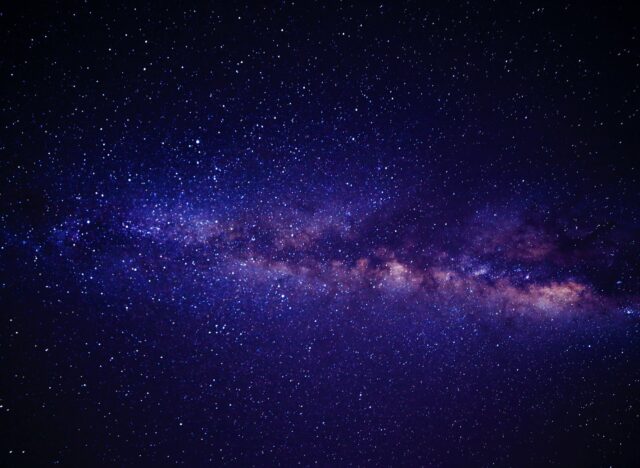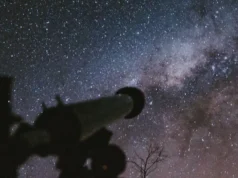
We spend a lot of time worrying about the unknown aspects of our universe, like the existence of aliens. Meanwhile, things that we should worry about are literally everywhere and go virtually undetected. Indeed, the truth is out there, and it will most likely corpse you.
Fast Moving Black Holes
https://www.youtube.com/watch?v=UA3wn9NbKYU
Black holes, the invisible killer of space. If you asked most people to pick just one scary thing in the universe, most would cite black holes because we’ve utilized them so much in popular culture that we know they exist without really knowing what exactly they do. To most of us, black holes are like the Pac-Man of space, so let’s go with that.
Black holes are categorized by size. The largest and smallest, supermassive and micro, have unknown origins (and micro black holes only exist in theory), but intermediate-sized black holes are formed when a series of stars collapse and merge, and this is probably what most people are thinking of when they think the black hole in the first place. They don’t simply consume everything that surrounds them since their field of gravity doesn’t reach particularly far. That brings us to fast-moving black holes, which bring the business to you.
Originally it was thought that only supermassive black holes roam, but it turns out that fast-moving black holes do more than roam, hauling ass at a mighty nine-hundred million miles an hour. Think about that: that’s a number that most children use to describe how much cooler they are than their friends.
However, that isn’t the danger. It’s true that fast movers don’t possess a great reach, but when they combine with other objects, they change direction, so we could potentially have hundreds of invisible speeding space suckers swirling the cosmos. The real danger is that one of these holes strikes something and sends it our way at nine-hundred million miles an hour. Good going with that bomb shelter, asshole.
2. Supermassive Black Holes
No, it’s not just a song of questionable merit. Supermassive black holes exist and are potentially the most dangerous forces in the universe.
Black holes by definition are masses so dense that nothing can escape their gravitational pull within a certain range of the hole itself. As the name would imply, supermassive black holes are the Andre the Giants of celestial bodies, with a mass of about four-million Suns. We currently can only detect the presence of black holes by observing the movement of objects in a specific area. Depending on the path and speed of a group of objects, we can safely assume that a black hole is about to rock them like a hurricane.
So, at the center of every galaxy, you’ll find stars and gas clouds orbiting with a high velocity. Science seems to suggest that this means a supermassive black hole is present at the center of every galaxy, including our own. This isn’t really a problem since we’re obviously far enough away to not be in danger. However, the problem with black holes is that they “feed” on gas, and eventually stop.
When they pull in a certain amount of gas it creates an area of accretion around the hole itself, and the holes are said to become an “active galactic nucleus,” or has become active. During this period the AGN become the main generators of x-ray radiation in their galaxy, stripping it entirely of its star producing gas.
Eventually, this process stops when the hole has nothing left to feed on, essentially shutting itself down. However, during the AGN phase star production is increased rapidly in what are called starbursts. These stars are massive and most often end in supernovas, wiping out whatever may be nearby. In essence, supermassive black holes could be seen as littering their own galaxies with tons of explosives.
3. Rouge Planets
Depending on what decade you were raised in, our solar system has anywhere between eight and nine planets. But that’s only counting the planets that play by the rules. Rouge planets are the bad boys of outer space, and they simply do not give a damn about you or your precious “orbit.”
Rouge planets are bodies that no longer orbit something else and simply move through the galaxy until something stops it or it stops something or both. The leading theory on their origins suggests they were booted from their original orbits, presumably for being too extreme. Though it doesn’t fit the whole “extreme” angle, imagine it as a game of croquet in space.
While frightening entirely on their own, a few things about rogue planets are straight-up terrifying. First, the number of them is estimated to be equal to twice as many stars in our galaxy. That’s… a lot. Second, the average size is comparable to that of Jupiter. Now imagine two-hundred billion Jupiters untamed by a strict orbit, rushing around in any direction at all. Either God has a twisted sense of humor or he just really, really likes pinball.
A rouge planet charging into a new system isn’t necessarily a violent event, but it could be just as disastrous. It’s currently believed that a rogue planet could push another object from orbit, sending it careening through space.
4. Hypernova
As the name suggests, a hypernova is like your standard supernova but with a maxed-out combo meter. Hypernovas result from a supermassive star when it reaches the end of its life and its core collapses directly into a black hole. Energy is released at rapid rates, creating two jets of plasma that move at the speed of light and emit gamma radiation. It’s like a cannon of science.
The good news is that this can only occur in the largest stars in our galaxy, the hypergiants, which have one-hundred to three-hundred times the mass of our Sun. These are incredibly rare as is and only hypernova (roughly estimating) once every two-hundred million years or so. The bad news is that Earth is severely overdue to be rocked right in its face.
It’s entirely possible that Eta Carinae, the nearest object capable of pulling off the hypernova, could just up and explode. However, it’s too far away to do any extensive damage from seventy-five hundred light-years away. Had it been in our neighborhood, the plasma jets at the explosion would easily wipe out life on the planet. However, our solar system is like a gated community and Earth is safe, keeping the scary hypergiants a healthy distance from our sidewalks.
An interesting side note is that a hypernova may have been responsible for the third-largest extinction event in Earth’s history, the Ordovician–Silurian extinction event.







